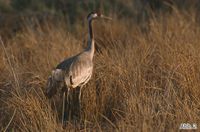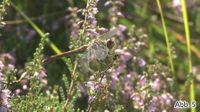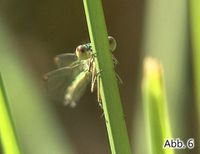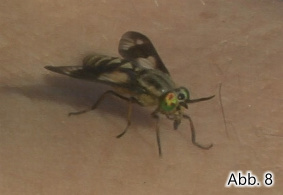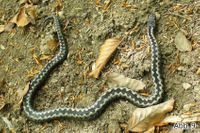Fauna in the moor
Who's disturbing out flirt?
The crane (Fig. 2) can’t read and doesn’t know where the conservation area ends. He needs a very special, undisturbed place for mating. His preferred habitat is the meadows in the Ise valley, just outside the Great Moor conservation area. There, he starts his breathtaking courtship flights, which make the turns and swoops of a stunt kits look pale. Mating will not be achieved without this grand acrobatic performance. Just before the pinnacle of his show for his mate, a quad rattles across the meadow, startling the cranes frightening them away. The impressive courtship display is over.
The moor frog (Fig. 3) is too slow to cross the road. It is rarely seen in Platendorf, to the west of the Dorfstraße. In the Great Moor and in Neudorf, to the east of the Dorfstraße, it is even found in garden ponds.
Many species of dragonfly (Figs. 4, 5 and 6) have become adapted to life in the moor.
Other animals are not so popular. These include spiders (Fig. 7), horseflies (Fig. 8) and the adder (Fig. 9). The grass snake (Fig. 10) is completely harmless and easily identified from the yellow patches behind its head.
Links to other stations in the museum - in English language:
<1> <2> <3> <4> <5> <6> <7> <8> <9> <10> <11> <12> <13> <14> <15> <16> <17> <18> <19> <20> <21> <22> <23>
